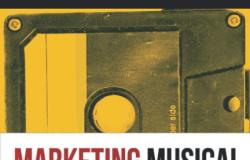
There are entries about lightning (do they never really strike twice in the same place?), about dinosaurs (why is it repeated that they became extinct after an asteroid collided with the Earth?), about bats (are they blind really?), about the senses (what if there were more than five?). In the brand new 50 misunderstandings in science (Godot Editions, 2024) British researcher Brian Clegg seeks to clarify some erroneous or confusing ideas that circulate as if they were true around topics of great interest to everyone.: nature, climatic phenomena, the sky, body parts, health, the origins of humanity, among others. And he does it with kindness, with concrete examples, with forceful explanations that seek to scientifically clarify erroneous concepts that have become crystallized by repetition.
For each of the 50 misunderstandings, Clegg offers a brief but very complete text that, far from expelling, invites in each case to exercise curiosity and often understand the roots of these confusions. “The rainbow has seven colors”, “Sugar makes children hyperactive”, “Humans only use 10 percent of their brain capacity”, “Newton discovered gravity when an apple fell on his head” are some of the concepts that the researcher seeks to refute, elucidate or clear up.
“For thousands of years, humanity has turned to folklore and the wisdom of proverbs to try to explain the world around us,” says Clegg in the introduction to his book and adds: “Some of these beliefs, the product of experience , then they have proven to have a scientific basis; For example, the reddish sky at night is a true indication that there will be good weather the next morning (…). However, there are also explanations and beliefs that are false and persist today, despite abundant scientific evidence that proves otherwise.”.
consulted by elDiarioAR Regarding the power of popular sayings and famous sayings to spread these scientific confusions, Clegg clarifies from the United Kingdom by email: “These are not always old sayings. Sometimes it is an incorrect approach or a misunderstanding driven in part by ‘common sense’ that does not always understand science well.. Probably the greatest influence lies in the fact that these old sayings, simplifications and misunderstandings associated with popular sayings came to us during our childhood and that tends to stay with us for life.
According to what he told this medium, It took him around six months to develop each of the concepts. and explain them in detail.
A lover of science, mathematics and physics, Clegg has been dedicated to scientific dissemination for some years in books such as A brief history of infinity, Ten patterns that explain the universe, The bible of quantum physics which had great impact in their English editions.
In the case of 50 misunderstandings in sciencepublished for the first time in Spanish through the Argentine label Godot and with translation by Paula Guertlerdecided to bring together several of the issues that reveal him and that already appeared in his other publications.
“If I have to be honest, there were 50 left in the book because that’s what the editor asked me for. And 50 is always a number that editors love. There are many books with ‘the 50’ of this or that. I feel that it is a good number and much more practical for a book than a hundred”he joked.
Graduated from Manchester Grammar School and then in Natural Sciences from the University of Cambridge, the author specialized in experimental physics. Some time later he also completed a master’s degree in Operational Research, a discipline that emerged in World War II to apply mathematics to behavior during war. and currently focused on conflict resolution and decision making in the business world.
With its own consulting firm, which advises, among others, Sony, the BBC and the Bank of Scotland, Clegg is dedicated to disseminating scientific knowledge in talks and also in books.
“One of the great advantages of being a writer on matters related to science, as opposed to working as a scientist, is that I can choose to write specifically about what interests me. That’s why I had the chance to write books on anything: from infinity to time travel. But, as always happens with this type of book, while other topics were being completed, I found new things in my search that fascinated me as much as the ones I had thought at the beginning.“, he assured about 50 misunderstandings in science.
“Inevitably, some of these stories stand out to me or are among my favorites. That of the title of the book in English around the lightning bolt (N. de R: the original in English is Lightning Often Strikes Twice), for example, because it has an interesting story behind it. Or the misunderstanding that a coin falling from the heights of the Empire State Building could kill you, for example, in part because someone might go so far as to try the experiment. And also the idea that toast always falls on the side of butter, because it is one of those that is usually relegated as a myth and should not”he added.
When asked if there are issues that stand out among these widespread but incorrect beliefs, Clegg concludes: “Many of these misunderstandings have to do with food and health, which are issues that we are always thinking about. In the case of health, at the same time, it is something that usually causes us concern.. So in general these are things that have to do with our daily lives so, inevitably, they are important to all of us.”
AL/MG





